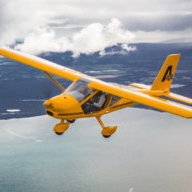Hello thread followers - Peter at Foxbat Australia here.
Maybe a couple of points of clarification would be helpful. The A22LS 'Foxbat' has a Y-stick with electric elevator trim as standard. Because of the ergonomics and the position of the Y-stick, having a manual trim lever with the Y-stick doesn't work. The twin Cessna style yokes are optional and, to help minimise the extra cost, they come with a manual elevator trim lever. Electric trim is available with the yokes but so far in Australia, no-one has ordered it. The manual trim is much quicker than the electric when used during landing approach. However, due to its much lower gearing, the electric trim is easier to get straight & level hands-free flight in the cruise.
Regarding the hostilities in Ukraine - the factory is just to the west of Kiev - close to 1,000 kilometres away from the separatists. In the last 18 months since the problems began, I have delivered 19 A22LS in Australia and many thousands of dollars worth of parts. I think the factory is determined to show the world that they are in no way affected by what's going on in the east of Ukraine and their service has been impeccable.
Concerning spare parts - much of the aircraft - engine, propellers, instruments, avionics, wheels, brakes, tyres, nuts and bolts etc are all available from USA and Australian suppliers. It is really only certain airframe parts which are factory-specific and all of these can be 're-manufactured' by a competent aircraft repair shop. Some airframe parts can also be sourced through component suppliers - eg windshields, door transparencies etc.
At any time, I hold several thousand dollars worth of spare parts - except for engine parts, which are available through the local Rotax importer. Any problems, just call me. Search for Foxbat Australia on this site for details.
Hope that's helpful!







